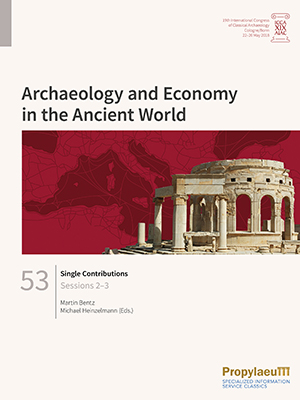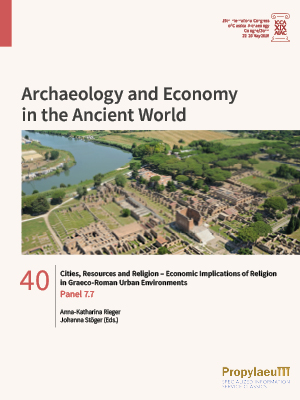Iara, Kristine
Sessions 2–3, Single Contributions
Economic aspects permeate all areas of public and private life in ancient societies, whether in urban development, religion, art, housing, or in death. Research on ancient economies has long played a significant role in ancient history. Increasingly in the last decades, awareness has grown in archaeology that the material culture of ancient societies offers excellent opportunities for studying the structure, performance, and dynamics of ancient economic systems and economic processes. Therefore, the main objective of this congress was to understand economy as a central element of classical societies and to analyse its interaction with ecological, political, social, religious, and cultural backgrounds. The theme of the congress was addressed to all disciplines that deal with Greco-Roman civilization and their neighbouring cultures from the Aegean Bronze Age to the end of Late Antiquity.
In this collective volume, single contributions of sessions 2 and 3 are dealing on the one hand with the investigation of natural environmental factors – climate and landscape – as impacts on the ancient economy, and on the other hand with the exploration of production system. Thematically, the spectrum ranges from the contextualisation of ancient handicrafts, to questions about the production of, for example, decorative metal objects, glass, portrait statues and bricks, to ancient architecture and the associated construction system. The temporal and topographical framework extends from Mycenaean and Archaic Greece, through Iron Age Southern Italy and Hellenistic-Roman Sicily as well as Macedonia, to Imperial Spain and Asia Minor.
Cities, Resources and Religion – Economic Implications of Religion in Graeco-Roman Urban Environments: Panel 7.7
City and religion as subjects of archaeological research in the Mediterranean are often limited to sacred buildings within the spatial and social fabric of the city. However, specific urban factors such as the concentration of economic potential, control of financial resources, but also heterogeneous populations, marginalization, and power imbalances impact religious practices and their reflections in material culture.
The contributions in this volume discuss how economic characteristics of urbanity are reflected in institutional, medial, and performative expressions of religion(s) in cities of Italy and Asia Minor. These interactions are not only of interest for Greco-Roman antiquity, but are relevant in our modern world of globalized markets: With the concentration of economic power the potential for tensions and religious conflicts increases as rapidly as cities grow.








